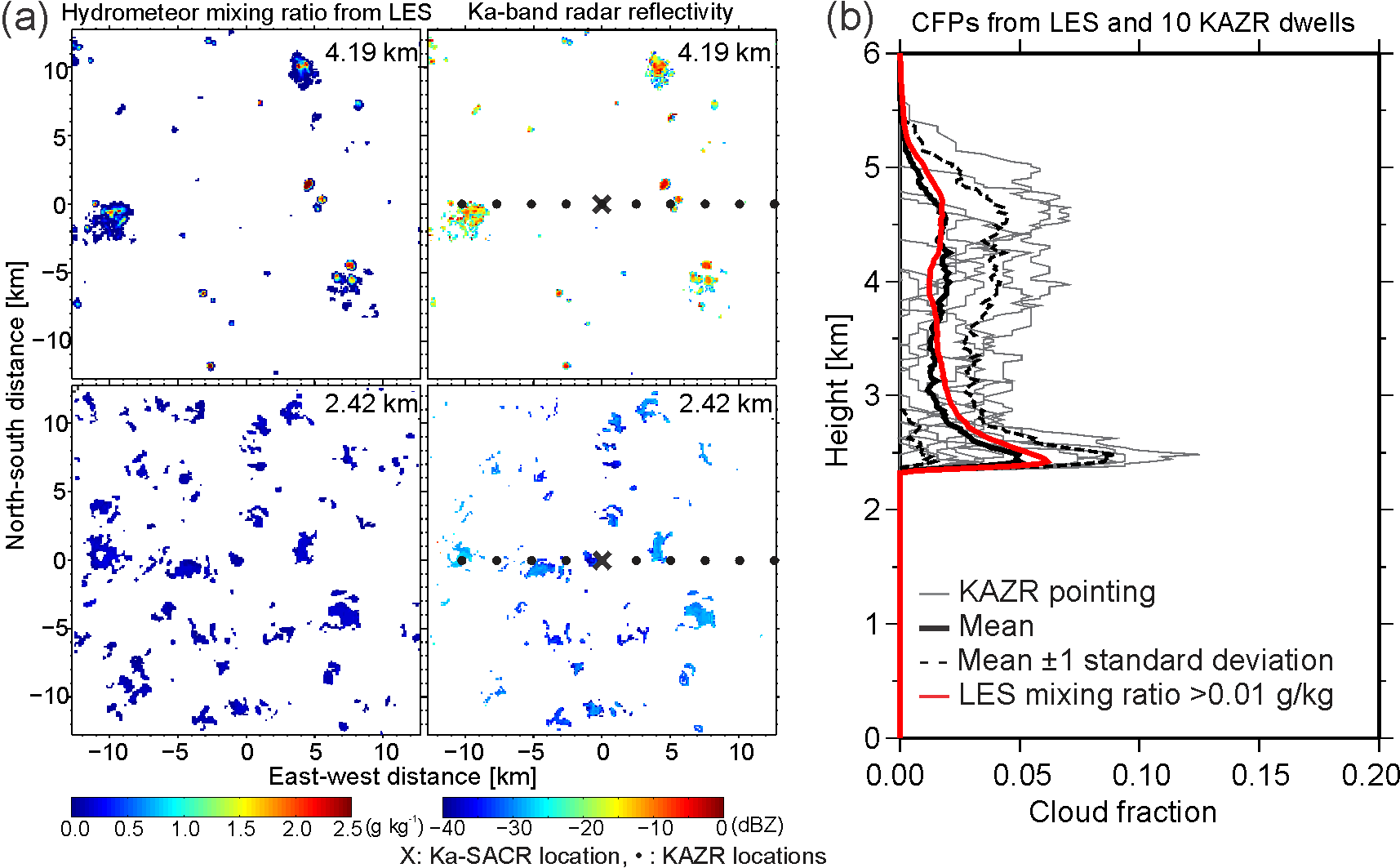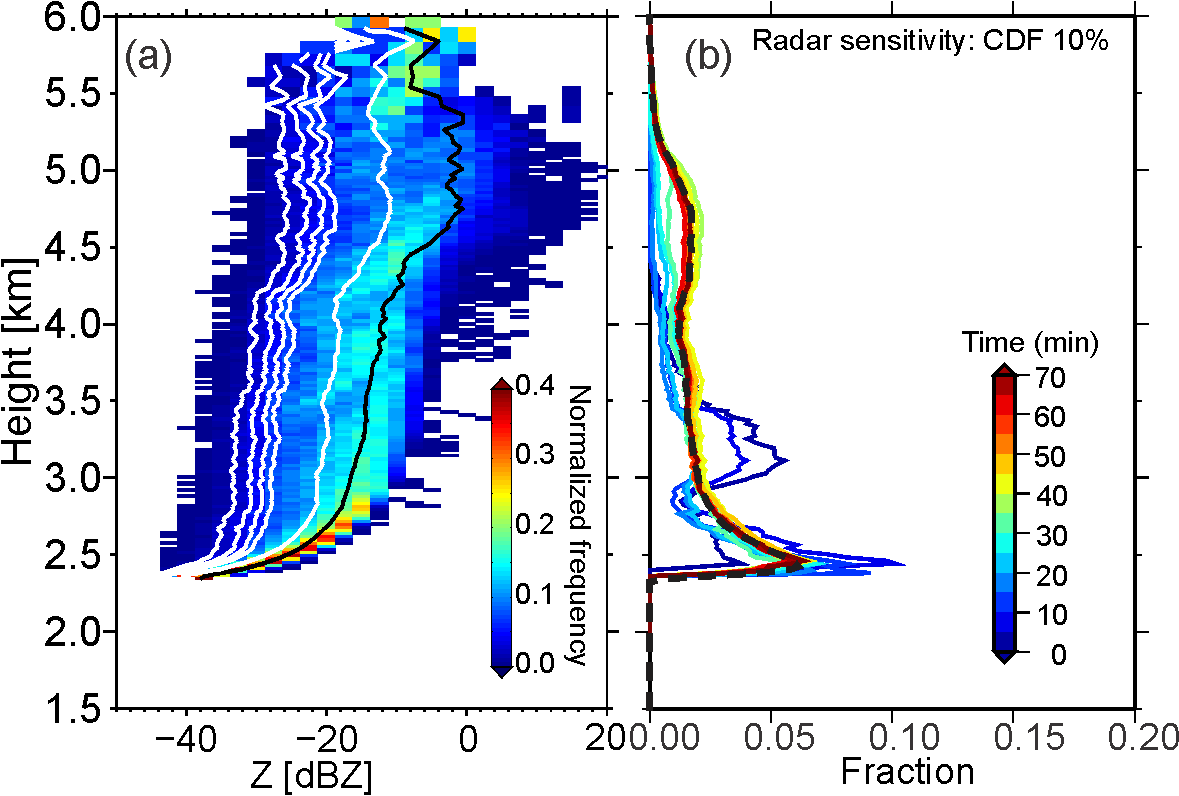Estimation of cloud fraction profile in shallow convection using a scanning cloud radar
Submitter:
Kollias, Pavlos — Stony Brook University
Oue, Mariko — Stony Brook University
Area of research:
Cloud Distributions/Characterizations
Journal Reference:
Science
Shallow convection plays a critical role in the heat and moisture transfer between the boundary layer and free atmosphere above about 2 km. However, with an average spatial scale of 0.5–1.5 km, shallow cumuli are not resolved in weather forecast and climate models, and their broken cloud coverage results in uncertainties in estimations of domain-averaged cloud fraction profiles (CFP, Fig. 1).
Impact
An objective method is proposed for estimating domain-averaged CFP using observed statistics of Ka-band scanning cloud radar (Ka-SACR) hydrometeor detection with height to estimate optimum sampling regions. This method shows good agreement with simulated CFP from large-eddy simulations (LES). The new techniques developed in the study increase confidence in the retrieved CFP when looking at the true atmosphere and improve our ability to compare model output with cloud radar observations for shallow cumulus cloud conditions.
Summary
This study is the first to use LES output from the new LES ARM Symbiotic Simulation and Observation (LASSO) capabilities currently under development. LES from LASSO and of the RACORO field campaign provide detailed cloud fields that serve as proxies of true cloud fields. The LES combined with a radar simulator provide an estimate of what can be observed in the atmosphere.
Uncertainties in domain-averaged CFP estimates are addressed using LES of shallow convection over the SGP coupled with a radar simulator. The radar simulation analysis indicates that observation from a single vertically-pointing Ka-band radar (KAZR) is inadequate to provide reliable CFPs (Fig. 1b). Use of Ka-SACR, performing a sequence of cross-wind horizon-to-horizon scans, is not straightforward because radar sensitivity decreases with distance. Sampling a small region in the vicinity of Ka-SACR ensures higher sensitivity, but this results in undersampling the overall cloud field. Alternatively, a larger sampling region ensures sampling more clouds, but the lower sensitivity farther from the radar underestimates the CFP. Using the cumulative distribution function (CDF) of reflectivity as a function of altitude, as depicted in Fig. 2a, an optimal minimum detectable reflectivity at each height is determined from the CDF isoline that provides an optimum selection of region size and radar sensitivity. The Ka-SACR observations need to be conducted for 35 min or more for CFP estimates to converge with the LES-simulated CFP (Fig. 2b) with an RMSE less than 1% on the order of 5% CFPs.



